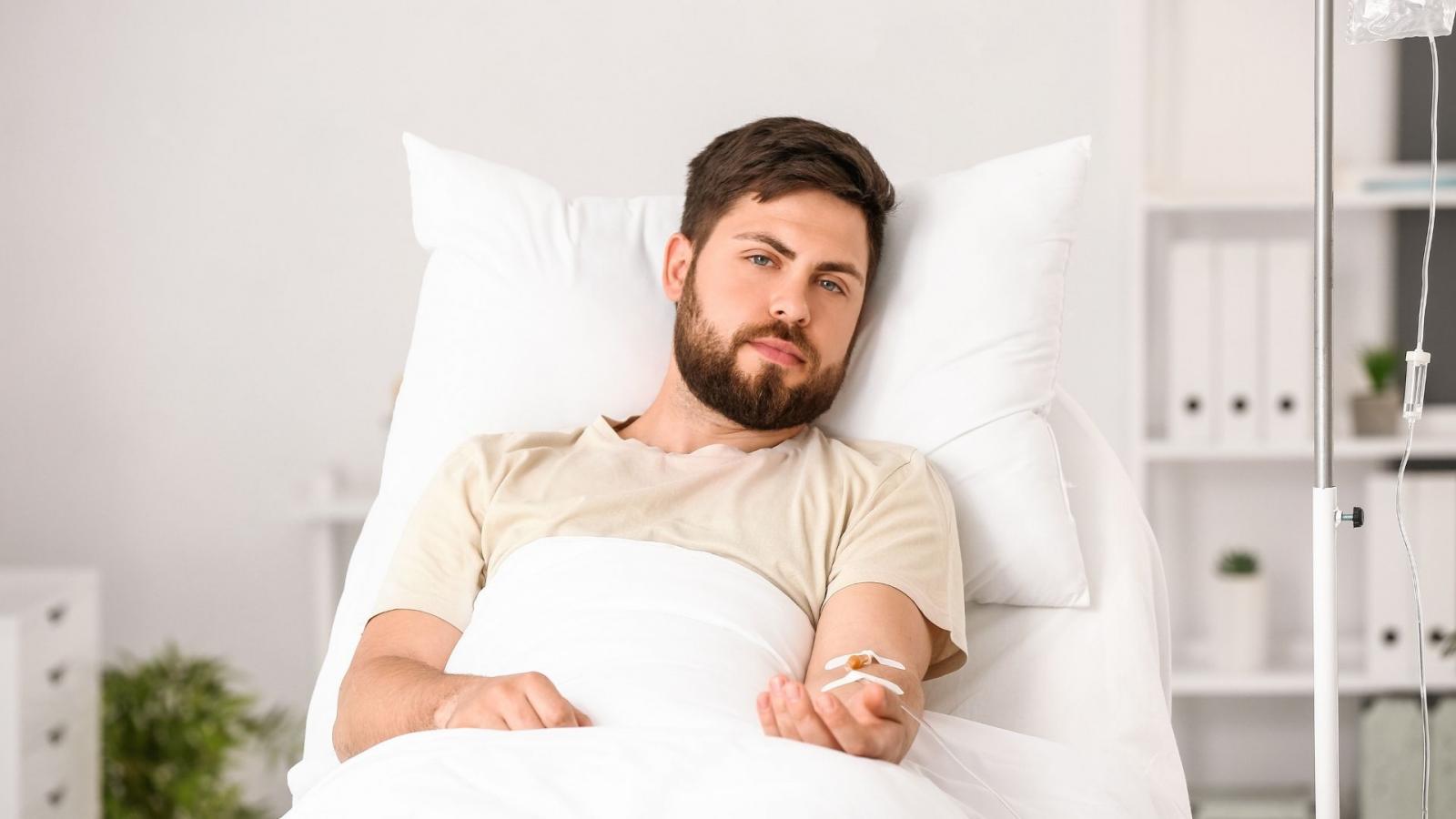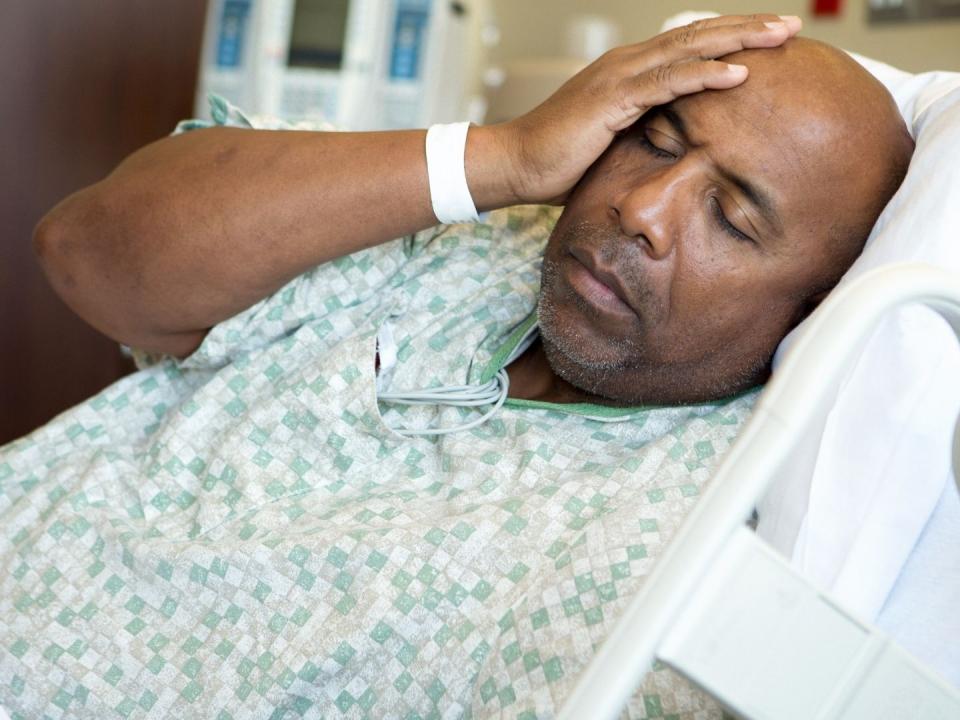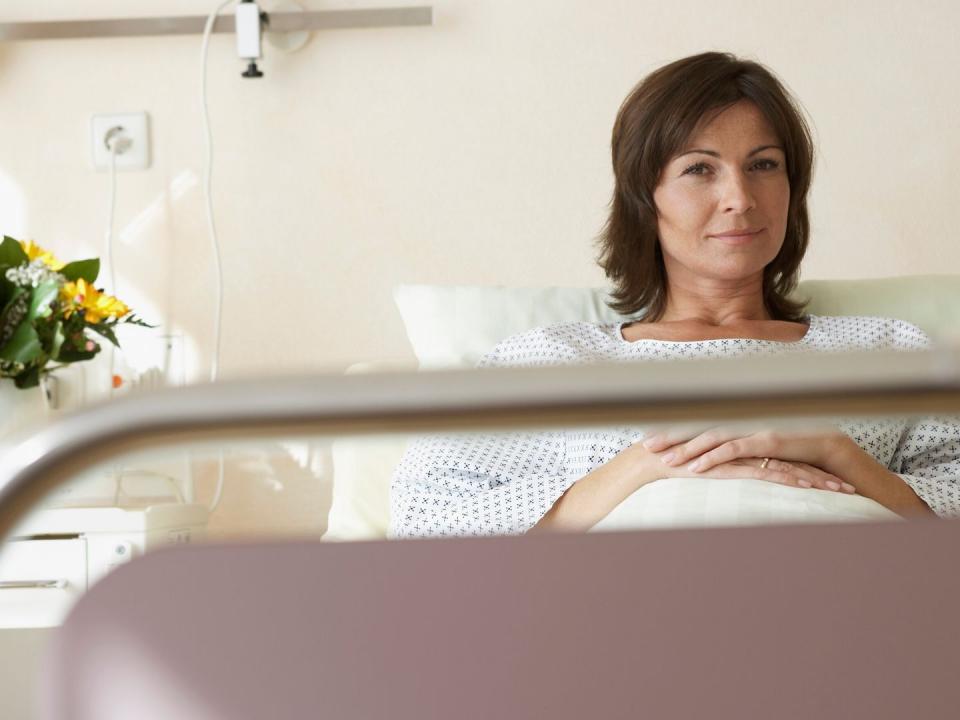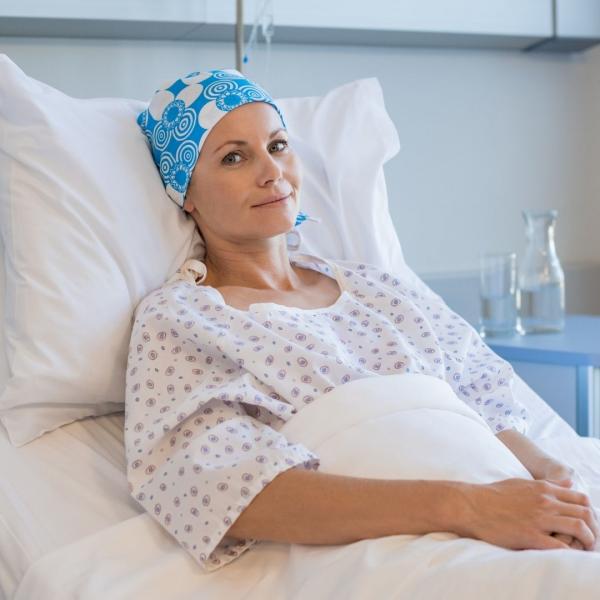Stem cell transplants using your own stem cells (autologous transplants)

An autologous stem cell transplant allows you to have higher doses of chemotherapy than usual to treat your disease. The high-dose treatment will destroy your bone marrow. An autologous stem cell transplant uses healthy blood stem cells from your own body to replace your damaged bone marrow.
There are 6 main stages:
- Preparing for the transplant: You have tests to check your general health, and are given advice on preparing for the treatment. You may have chemotherapy or radiotherapy to reduce your disease to as low a level as possible and you will have drugs to move your stem cells from your bone marrow into your blood.
- Stem cell collection: Before your stem cells are collected you will be given drugs to move your stem cells from your bone marrow into your blood. When you have enough stem cells, they are collected using a special machine.
- High-dose (conditioning) treatment: You will be admitted to a special hospital ward to receive your treatment. How much chemotherapy you need will depend on your condition.
- Getting your stem cells back: Your stem cells are usually given
back to you 1–3 days after the chemotherapy has finished. - Waiting for new blood cells to grow: After your stem cells are given back to you, they find their way to your bone marrow and start to grow and make healthy new blood cells. After the transplant you will be looked after in isolation to protect you from infection. Usually after 10–21 days, your blood counts will
start to recover. - Recovering after the transplant: When your blood cells have recovered and you are well enough, you can go home. Your doctor or nurse will give you advice about avoiding infection. You will have regular follow-up appointments at the hospital to check your recovery.
Preparing for a stem cell transplant
Tests
- Blood tests: Blood tests can show the numbers of different types of blood cells. This is called a full blood count. Doctors will also check your blood group, clotting and iron levels and how well your kidneys, liver and bones work. They will also check for the presence of viruses, for example, HIV, hepatitis A, B, C and syphilis.
- 24-hour urine collection: This test checks how well your kidneys are working. You will be given a large plastic bottle to bring home with you to collect your urine. You will be asked to collect all the urine you pass in a 24-hour period at home. It's best to start in the morning. It is important to collect all the urine you pass in the bottle or the test will have to be repeated. To measure the results, you will need a blood test taken when you return the urine collection to the hospital.
- Dental check-up: Before you have the high-dose chemotherapy, a dentist needs to check your teeth. Decaying teeth can cause a serious infection during your transplant. You can visit your own dentist for this check-up. Your doctors will need a letter from your dentist saying that you are dentally fit for the transplant
- Infection testing: Certain infections, which are not usually harmful, may cause problems after high-dose chemotherapy. Tests will help your doctor choose the correct antibiotics if you do become unwell.
- Lung function tests
- Chest X-ray
- Heart tests (ECG and echocardiogram (ECHO)
You may have other tests, depending on your condition and medical history. For example, bone marrow biopsy and lumbar puncture. Read more about cancer tests.
Having a central line put in
Before your high-dose chemotherapy, you will need a special line (tube) placed in a large vein. Any treatment or medication that needs to go into your veins can be delivered through the line, meaning there is no need for needles in your arms every time. It can stay in place during and for a time after your treatment. Read more about central lines.
Moving stem cells from the bone marrow into your blood
The most common ways to do this are:
• Giving growth factors (G-CSF)
• Giving chemotherapy and growth factors (G-CSF)
Growth factors (G-CSF)
G-CSF causes blood stem cells to be released from your bone marrow into your bloodstream. These stem cells can then be collected from your bloodstream.
The growth factors are given as a daily injection under your skin for several days.
The haematology team will discuss how to give the injection with you. A family member, partner, or public health nurse can be organised to give the injections. If you wish, you can give the injections yourself.
Side-effects
The most common side-effect of these injections is bone pain. The pain is usually relieved by simple painkillers such as paracetamol. However, paracetamol may mask or hide a fever. Other side-effects include flu-like symptoms, tiredness, headache, sleeplessness and irritability.
If you feel unwell in any way, the best advice is to contact your hospital.
Chemotherapy and growth factors (G-CSF)
You may have a course of chemotherapy before starting the G-CSF injections. This is both to treat your condition and to increase the number of stem cells mobilised. Some chemotherapy may be given as an inpatient, while others are given as an outpatient.
Collecting (harvesting) stem cells

Side-effects can include:
- Feeling light-headed
- Feeling dizzy
- Nausea
- A sour taste in your mouth
- Tingling around your lips, fingertips and other sensitive areas
- Bleeding or bruising
- Tiredness
Tell your nurse if you have any side-effects.
High-dose treatment
After the collection you will be given a date to go for your high-dose chemotherapy. You may also have other anti-cancer drugs or radiotherapy to your whole body (TBI). This is known as conditioning treatment. You will have your treatment in a special unit, which usually has single ensuite rooms and filtered air to reduce your risk of getting an infection afterwards.

The chemotherapy will be given into a vein through your central line. You will need to drink lots of fluids to flush out any harmful toxins and waste products afterwards.
The high-dose chemotherapy will cause your blood count to fall. In particular, your white blood cells will be very low. This means your immune system will be less strong and you will be at risk of infection. You are likely to experience some side-effects of chemotherapy. Read more about side-effects.
Getting your stem cells back
Your stem cells are usually given back to you 1–3 days after the chemotherapy has finished. These will grow and make new red blood cells, white blood cells and platelets.
The stem cells are first defrosted and then given through a drip into your central line. If you have more than 4‒6 bags of stem cells, you might receive them over 2 days.
The day you receive the stem cells is known as Day 0 (zero). This is because the staff measure your recovery starting from this day.
After getting the stem cells
- You may notice a strange taste and smell after the infusion. The smell is like garlic or boiled sweet corn. This is due to DMSO, which is a preservative used to protect the cells while in storage. It is nothing to worry about and the smell and taste will clear within a day or two.
- You might also feel some nausea.
- Your urine might turn red after the return of the stem cells as well. This will disappear within a few hours.

Waiting for new blood cells to grow
You will have growth factor injections to help the stem cells to grow and mature. The day which these injections start will vary, depending on the type of treatment you are receiving. You will remain on this injection until your blood counts have recovered.
You will need to wait for the stem cells to move into your bone marrow. This happens gradually and is called engraftment. During this time, your blood counts will be low and you may need transfusions and antibiotics. You will be looked after in isolation to protect you from infection. You will be closely watched and checked for signs of infection.
In general, visiting is restricted while you are in isolation. It is best that only your close family and friends visit you during your stay. This is to reduce the chance of you and other patients picking up an infection.
Coping with isolation
You might find it difficult being on your own without other patients around you. Your nurses can help you overcome these difficulties. They can arrange for you to talk to a clinical psychologist to try to help you cope.
Checking your blood
You will have daily blood tests, especially to check the number of white cells called neutrophils, which fight bacteria.
Usually after 10–21 days, your blood counts will start to recover. You can go home once your blood cells have recovered enough and you don’t have side-effects that need treatment in hospital.
Diet
Good nutrition can help to prevent you picking up any infections. You should try to eat, even if you have nausea or lose your appetite. The hospital dietitian can discuss the best way to deal with these problems. You may be given a special diet called a low microbial diet to limit your exposure to bacteria in food.
Moving around
Keeping active helps to keep your muscles working and is important for your lungs. Get up and walk around the room at least a few times a day. Even getting up to go to the toilet and to wash yourself helps with your recovery. You will be allowed to exercise and the occupational therapist or physiotherapist may plan an activity programme for you. You may be allowed out of the room for short periods when your blood count has started to rise.

Side-effects
You are likely to experience some side-effects from your stem cell transplant. Tell your medical team about your side-effects or if you feel unwell in any way. It's helpful to learn about potential side-effects in advance so that you can be prepared.
Find out about stem cell transplant side-effects
Going home
Once your blood counts have returned to normal levels and you are eating and drinking well, you will be allowed to go home. This is usually about 10–21 days after the transplant. But this can vary depending on your recovery.
If you have been referred from another hospital, after your discharge you will be referred back to your original doctor for follow-up care. Before you go home the transplant coordinator or specialist nurse will tell you if you need any further check-ups at the transplant centre.
Outpatient visits
For the first few weeks after your transplant you may have to return to the day ward for blood tests. This is to check your blood counts and to make sure your liver, kidney and bones are working well. But in general, your blood tests will come back to normal quickly after discharge. You might need a blood, platelet or magnesium or potassium infusion in the weeks after the transplant. Once your blood counts are stable and your strength is improving, you will have fewer visits to the hospital.
These check-ups after treatment are called follow-up. It is likely that you will need follow-up visits for a long time after your transplant. This will depend very much on your original disease but you may need blood tests, bone marrow tests or scans.
Things to watch out for at home
Contact the transplant centre or your referring hospital if you have any of the following problems at home:
- A fever of more than 37.5°C
- Uncontrolled shivering
- A runny nose or flu or a cold
- Red or tender areas, or yellow/green ooze, around your central line
- Nausea, vomiting or diarrhoea
- An unusual or itchy rash or sore
- Bleeding or bruising. For example, blood in your urine, coughing up blood or nose bleeds
- A persistent headache
How will I know if the new cells are working?
The first sign that the transplant has worked is when your blood counts increase. A special follow-up visit happens about 100 days (3 months) after the transplant. At this visit, your doctor will check how your disease is behaving. Depending on your diagnosis, this visit may take place at the transplant centre or at your referring hospital.
Your transplant coordinator will organise any tests you need for this follow-up appointment with you or your referring hospital. These may include blood tests, a CT scan and a bone marrow biopsy. You will also need blood tests to check your hormone levels, thyroid function and immunity levels.
Central line
Your central line can usually stay in until your blood counts are high enough to allow it to be removed. If the line needs to stay in place, you or a family member will be shown how to care for it at home. It will also need to be cared for weekly with a flush and dressing change on the day unit.
Medications
You will have medications to take at home. Some of the common ones are:
- Anti-sickness medication, but you may not experience nausea or vomiting at all
- Antacid – to treat heartburn
- Antibiotics to protect against a particular strain of pneumonia
- Anti-viral drugs to protect against the cold sore and shingles virus
Continue to take any medications you are given until your doctor decides to stop them.
Tiredness (fatigue)
For the first few weeks after the transplant your energy levels will be very low. Fatigue can be a frequent and unpleasant side-effect. You will probably find you have no energy and do not feel like doing anything at first. Just getting up, washed and dressed can be a challenge in the first few weeks. Don’t be expect too much from yourself – take one day at a time. This tiredness can last for a few months but sometimes can take longer to overcome. Read more about coping with fatigue.
Avoiding infection
Even if your blood counts are back to normal, your immune system takes a little longer to recover. Continue to be careful. For example:
- Continue to shower every day and be strict about your personal hygiene.
- Continue your mouthwashes until your next visit to the day ward.
- Avoid people with infections.
- Avoid areas that are overcrowded.
- Avoid close contact with pets, especially birds, in the first few weeks.
- Avoid swimming if you go home with your central line in place.
- Keep your fridge clean.
Appetite and diet
You may find that you don’t have much appetite or your taste and sense of smell has changed. Foods that you loved before might now begin to taste and smell different. Try not to worry as your appetite and taste will gradually improve. It’s important to eat as well as you can, so ask to talk to the hospital dietitian if you’re experiencing problems or losing weight. We also have advice on eating difficulties, including tips to help if your appetite is poor.
Aim to drink 2 to 3 litres of fluid a day to speed up your recovery. Your mouth may continue to feel dry after your transplant so drinking plenty of fluids will also help with this. Often it is best to avoid alcohol for a time after your transplant. Talk to your doctor for more advice about alcohol.
Your sex life
It is likely that after your transplant your sex life will be affected in some way. Tiredness, anxiety and lack of interest can often be the reason. It is likely that once your energy levels return to normal so too will your sex drive (libido). If your platelets or white cells are low, ask your nurse for advice about having sex. Your nurse can help and support with issues affecting your sex life or close relationships.
Even though you are likely to be infertile after the high-dose chemotherapy, there is no guarantee that it will happen. Research suggests that a small number of patients can recover fertility after a transplant. It is important to use reliable contraception such as a condom after chemotherapy to avoid pregnancy. This is because the drugs might harm a developing baby. Your doctor or nurse will advise you to use reliable contraception for a few months afterwards.
For more information
Phone
1800 200 700
Your blood will be checked regularly over a number of days to see if there are enough stem cells to be collected.
During the collection you will be attached to a machine by two drips – one takes blood from your body and the other returns it to you after it has been through the machine, which takes the stem cells from your blood. You may have more than one session. Each session takes about 3–5 hours.
The stem cells are mixed with a preservative called DMSO and frozen.
Stem cell collection tips:
- Do not take aspirin or tablets containing aspirin 2 weeks before your stem cell collection. Your transplant team will discuss this with you.
- Have some calcium-rich food on the morning(s) of your harvest, such as milk, yoghurt or cheese.
- Wear or bring a short-sleeved top to allow easy access to your arms.
- If the day is cold, wrap up well. Keeping warm will help enlarge your veins and make it easier to put in the needles.
- Use the bathroom before you are connected to the machine. As you will be 3 to 4 hours on the machine, it may be difficult to use the toilet.
- Bring a friend. Often the time on the machine can be quite boring. Feel free to bring something to listen to, if you wish.
- Don’t drive after the collection. It is a good idea to have someone collect you afterwards.
- Relax and avoid strenuous activity for the rest of the day.
- Avoid smoking for at least 2 hours after the collection.
- You can go back to work the day after your last collection.
After the collection
You will be asked to stay on for about half an hour to make sure you are feeling well.
You might get some side-effects due to having slightly less blood in your system or to the anticoagulant used to stop your blood clotting (becoming thick).



